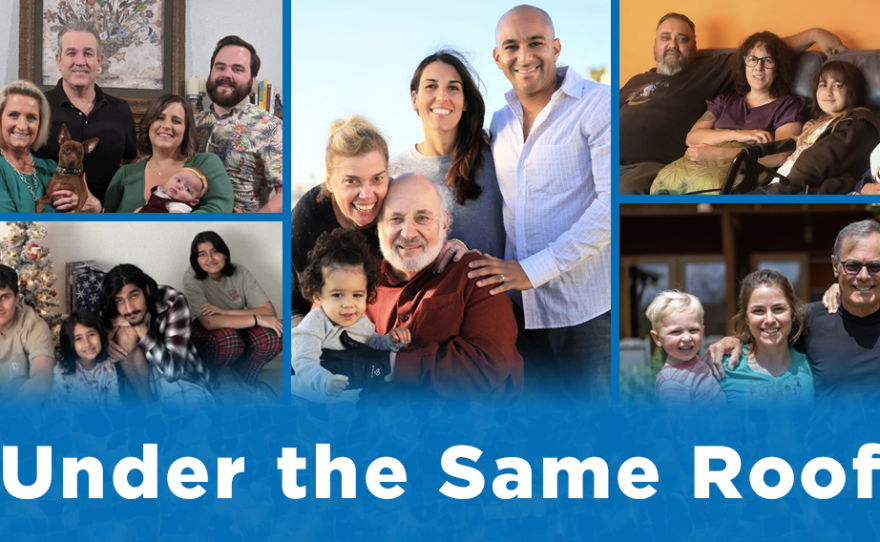San Diego is one of the top 10 cities in the country for multigenerational housing. This series tells the stories of multiple generations living under one roof.
Multigenerational households mean three or more generations living under the same roof, and in San Diego there are many of these living arrangements. More than 10% of local residents live in multigenerational households, and the San Diego metro region has the ninth most multigenerational households of all large U.S. metros, according to U.S. Census data.
Multigenerational living is the norm in many cultures, and it’s growing in the U.S.. According to a Pew Research study, the number of Americans living in multigenerational households has quadrupled since the 1970s. There are multiple reasons driving the trend in San Diego: housing prices, affordability, lack of childcare and a large immigrant population.
“It’s just too expensive to be here,” said Ricardo Flores, the director of Local Initiatives Support Corporation, a nonprofit advocating for affordable housing.
He said it’s one thing if the housing has enough space and privacy for multiple generations. But in many cases, that’s not what he sees.
“People convert garages, legal or illegal, to be able to house people,” he said. “As a kid, you don't think much of it, but then as you get older, you're like, wait a minute, that's the garage. That's crazy!”
Garages, living rooms, multiple people to one bedroom — Flores said he sees all sorts of living arrangements. He said the lack of affordable housing in San Diego is creating tenement-like living conditions.
He described visiting households in City Heights and opening the front door to reveal an incomprehensible number of people packed inside, heat radiating out.
“I didn't even look beyond,” he remembered. “Even though my eyes wanted to go like, ‘What the hell is happening here?’”
Flores said those kinds of conditions also lead to higher stress and lack of sleep.
“That's just not a productive way to live,” he said. “It's not getting the best out of our people.”
He sees lack of housing space as primarily a zoning issue. More than three-quarters of residential housing in San Diego is zoned for single families, while the lots could accommodate many more dwellings.
When multigenerational households do have enough space, there are tremendous benefits, said Juan Pablo Pardo-Guerra, a sociologist with UC San Diego.
He said multigenerational living tends to lead to better life outcomes, including higher college attendance, more women in the workforce and greater social mobility. The generations can share childcare and finances and build more capital.
And not just economic capital. He said multiple generations mean additional connections with the community. There are more good neighbors, more friends nearby to rely on, and a community that offers mental support throughout their lives.
In a special series, KPBS will tell stories from all ends of this spectrum: people who live together by necessity and by choice, in tight quarters and on sprawling properties, according to their cultural norms and against them.
They all have one thing in common — they’re making it work.







